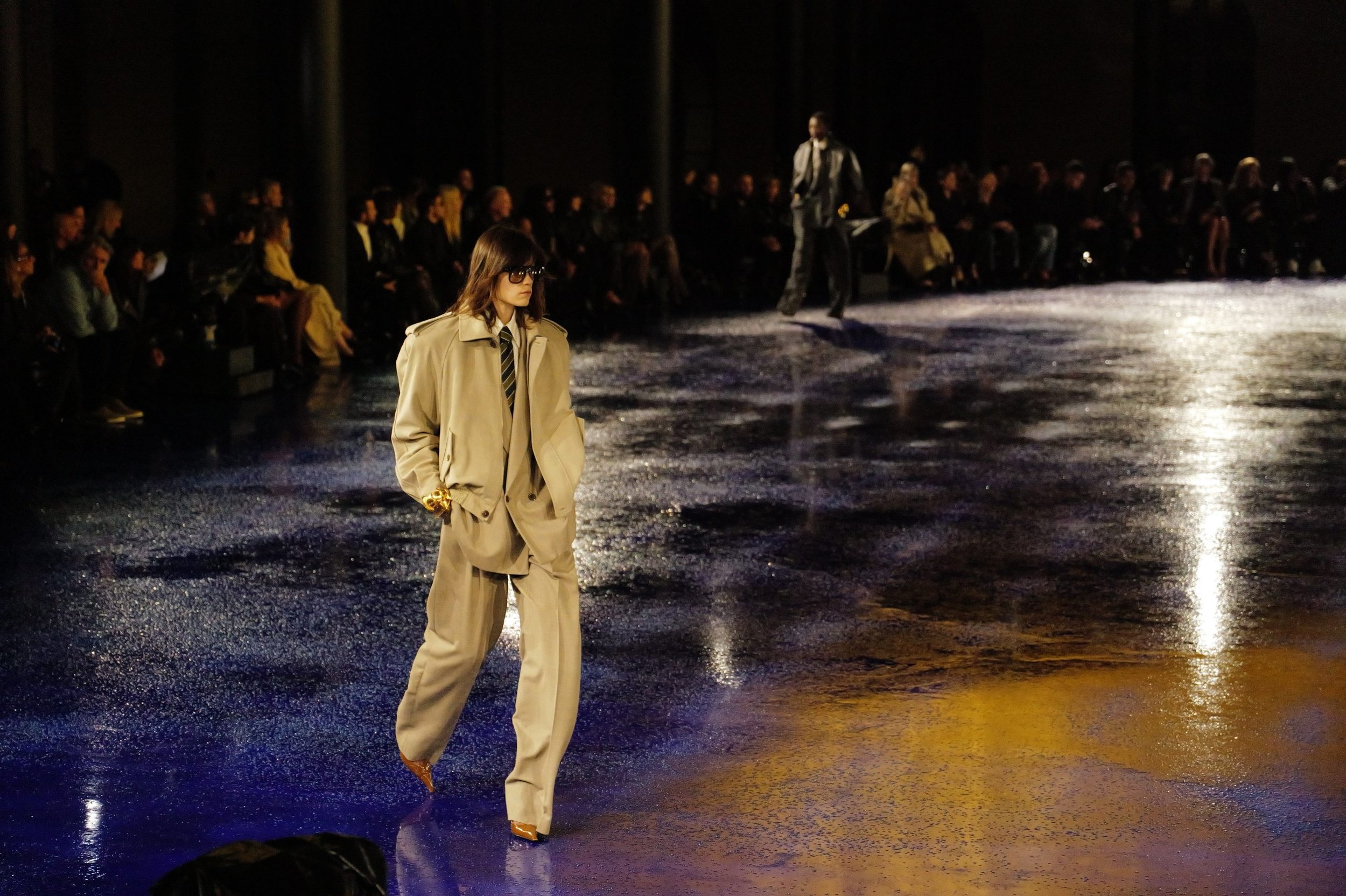THE VIRAL TREND OF NEWSTALGIA: WHY FASHION IS LOOKING BACK TO LOOK FORWARD
BY NICOLE ZENIOU
In turbulent times of great unrest and constant disruption, fashion brands must adapt quickly, exploring reshoring and new strategies to stay afloat in a volatile landscape. However, innovation is not always the source of the "new." More often than not, fashion finds its future in the past. The industry has long excelled at reviving archival designs and trends, but today, this cyclical nature is more pronounced than ever.
As critical questions arise about the sustainability of luxury brands in an increasingly competitive industry, a new sentiment has emerged—a longing for the past, perceived as a better, safer time. This sentiment, or quick comfort fix, has manifested as a viral trend: enter #newstalgia, which has amassed over 10.4 million posts on TikTok. Unlike pure nostalgia, which focuses on straightforward revival, newstalgia reimagines the old against a contemporary backdrop, merging heritage with modernity.
The Next-Gen Old Charms Conundrum
Newstalgia is the concept of blending past and present, classic and contemporary, taking familiar references and reworking them into culturally relevant, updated versions. The Urban Dictionary defines newstalgia as "something new that harks back to something old." Why is this happening now? Geopolitical unrest has driven people to seek guidance from the past to navigate the uncertain future. This desire to embrace—or escape—reality has led to a collective cultural retreat into the comfort of the known.
For brands, newstalgia is a powerful way to connect with new audiences. According to Forbes, "newstalgia addresses both a whole generation and its collective memories while also managing to transcend generations." It has the ability to unite Gen Z, Millennials, Generation X, and even Baby Boomers, despite their differing lived experiences.
A prime example is the resurgence of traditional wristwatches among Gen Z, highlighted by Mark Zuckerberg’s recent choice of a $900,000 Greubel Forsey watch. This signals a broader trend among younger generations seeking nostalgia, authenticity, and subtler status symbols. Another case in point is the enduring cultural obsession with retro sneakers—heritage sneaker brands have leveraged their archives to drive enormous sales in recent years. Similarly, Marc Jacobs' subsidiary line, Heaven, has successfully tapped into the Gen Z mindset by leaning into nostalgia, reviving its brand presence with modern relevance.
Burberry Spring 2025 Collection
The Growing Demand for Vintage
Interestingly, the demand for a brand’s vintage pieces is now often higher than for its current offerings. For instance, demand for vintage Gap has surged, with platforms like eBay and Depop reporting spikes in searches and sales. The challenge for brands like Gap is bringing these nostalgic shoppers back to their retail stores. This is where newstalgia comes into play—not merely as a nostalgic revival but as a movement that seamlessly intertwines vintage influences with contemporary aesthetics.
Newstalgia bridges the gap between past and present, reworking beloved icons and classic styles for modern audiences. It allows brands to tap into old designs that resonate deeply while ensuring their relevance to contemporary consumers.
Reinterpreting Newness: The Case of Burberry
Many brands have embraced newstalgia by reviving their heritage branding strategies. A prime example is Burberry. The digital era’s minimalist aesthetic prompted many fashion houses to simplify their logos, stripping away ornate details to optimize digital adaptability. Burberry followed suit in 2018 under Riccardo Tisci, removing its historic Equestrian Knight emblem in favor of a stark, sans-serif logotype.
However, in 2023, creative director Daniel Lee reinstated the ornate knight motif, a decision emblematic of the broader heritage revival trend. Speaking to Vogue Business, Lee stated, "Burberry flies the flag for Britishness and for the UK and for culture. We have a responsibility to communicate those things." His approach to newstalgia extends beyond branding—his AW24 collection drew inspiration from late-19th and early-20th-century outdoor wear found in Burberry’s archives. By integrating the brand’s past with contemporary silhouettes and materials, Lee reinforced Burberry’s heritage as a core selling point.
The “Selling Point” Past: The Case of Saint Laurent
A similar strategy has been employed by Saint Laurent. The house’s recent collections have drawn heavily from its archives, embracing newstalgia to engage both loyal customers and younger audiences. For its SS25 collection, Saint Laurent revived silhouettes from its 1958 collections, including Le Smoking, the first women's tuxedo. The power suit—an emblem of the brand’s 1960s androgynous aesthetic—was also reintroduced, modernized to reflect contemporary sensibilities. According to the show notes, "The Saint Laurent woman loves to indulge in darker penchants, an attraction to danger and pleasure she proudly owns in her modern agency."
This suggests that fashion may no longer be obsessed with chasing the "next big thing." Instead, it is rediscovering and reinterpreting its own past.
Newstalgia: Nostalgia for the Future
Brands across industries are increasingly embracing newstalgia, and there is much to learn from this phenomenon. Fashion’s greatest strength lies in its ability to make the old feel new again—to take the traditional and give it contemporary meaning. By rebuilding iconic design codes for an audience that has been fast-tracked to maturity through digital acceleration, heritage brands have found a powerful tool to maintain relevance.
The pendulum has swung back, reaffirming the enduring power of legacy. When wielded strategically, newstalgia offers heritage brands a unique opportunity to transcend demographics, appealing to both long-time loyalists and next-gen consumers alike. Most importantly, it allows them to tell the story of what was—and what is still yet to come.
ABOUT THE AUTHOR
NICOLE ZENIOU
Nicole Zeniou is a Contributing Fashion Features Editor at Bungalow 28, joining in 2024. Previously the Fashion Features Editor at Madame Figaro Cyprus, she has contributed to titles like Marie Claire Greece, Cosmopolitan Cyprus, and The Cyprus Weekly. Founder of the online interview magazine The Éditor, Nicole is passionate about blending creative disciplines and supporting international talent. She has interviewed leading fashion figures such as LaQuan Smith, David Koma, Casey Cadwallader, Lorenzo Serafini, and Mary Katrantzou.
Bungalow 28 is a tech and creative marketing agency working with DTC brands within fashion, luxury and cultural industries.






